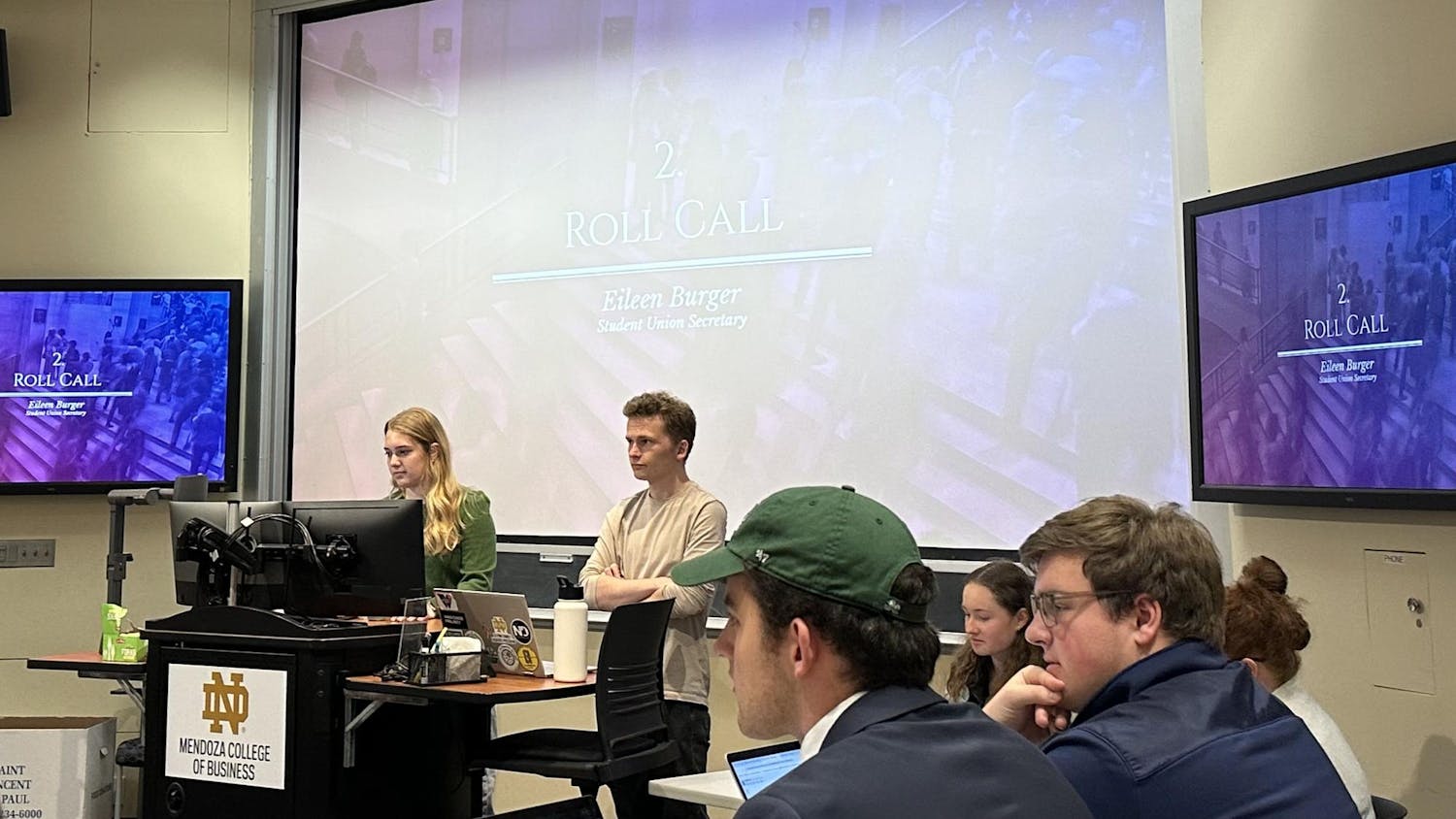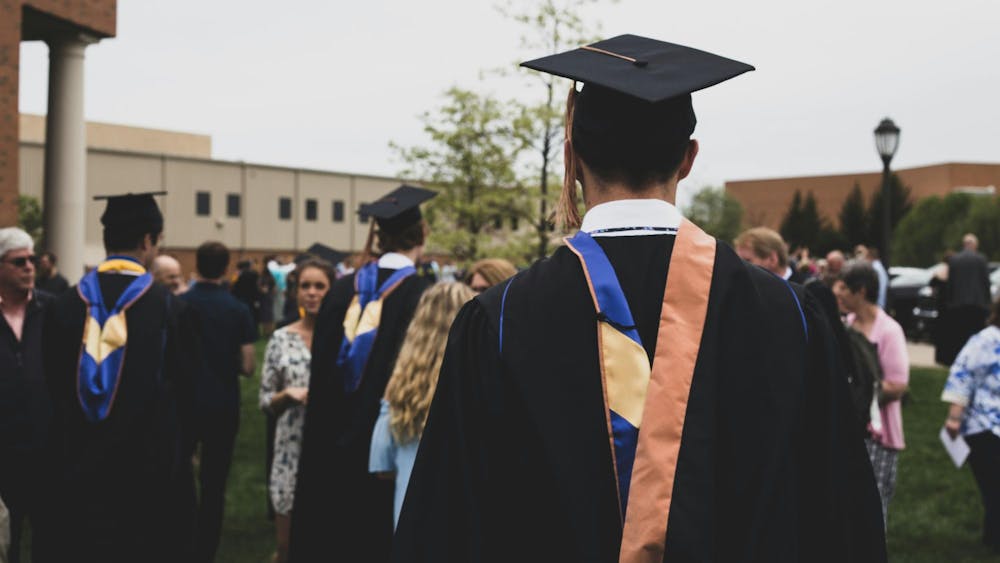Last semester, a team of Notre Dame students — sophomore Do Dam Hoang, juniors Maggie Feighery and Joseph Laski and seniors John Nolan and Michelle Kim — chose several items from the bookstore and researched their supply chains, hoping to gain insight into any human trafficking or civil rights violations involved in the production process. The team undertook this consulting project as part of a human trafficking seminar directed by associate director for the Center of Civil and Human Rights, Christine Cervenak.
The students conducted research using their client — the Notre Dame Licensing Department — to learn more information about bookstore vendors. The team identified merchandise including a Camelbak water bottle, a Hanes brand sweatshirt, a 47 brand cap, and Balfour class rings.
“Using data that’s available on the internet and data that they could get through the Licensing Department and Thomson-Reuters, they were able to investigate predictive risk analysis around companies and countries where items are produced,” Cervenak said. “Their task was to dive into the supply chains of these four products and assess the risk of there being forced labor in the supply chain.”
Junior Maggie Feighery said she acted as a source of communication for the team, as she was a social compliance intern with the Licensing Department at the time of the project.
“We generated some risk maps for these company supply chains, and all of them showed low risk for trafficking, which is great,” Feighery said. “Notre Dame is a leader among universities in terms of labor standards and being careful about what companies we license.”
Cervenak said in investigating these products, the team did find room for improvement in regards to Camelbak water bottles, whose supply chain revealed it doesn’t exhibit best practices in comparison to some of its competitors.
“It was an interesting suggestion that Notre Dame might say, “Let’s look at better alternatives” or “Let’s offer better alternatives to consumers,”’’ Cervenak said. “This all comes from an interest in having consumers be more aware of how dirty and clean the supply chain can be.”
One of the most important conclusions of the team’s project was that studying supply chains is difficult because there are so few companies that exhibit complete transparency, Feighery said.
“The main takeaway was that it is really, really difficult to trace a supply chain beyond the factory level,” Feighery said. “There are very few companies that actually keep track of where their materials are sourced from and even when they get parts of the products like buttons or zippers.”
Companies' lack of transparency was a significant point Cervenak said she wanted her to students to understand.
“It was important not only for the students to learn how complicated it is, and what best practices and companies look like, and how rare that is today [but also to understand] the role of consumers and sharing this with the campus community, which they did when they presented their findings at the Higgins Labor Cafe last semester,” she said.













